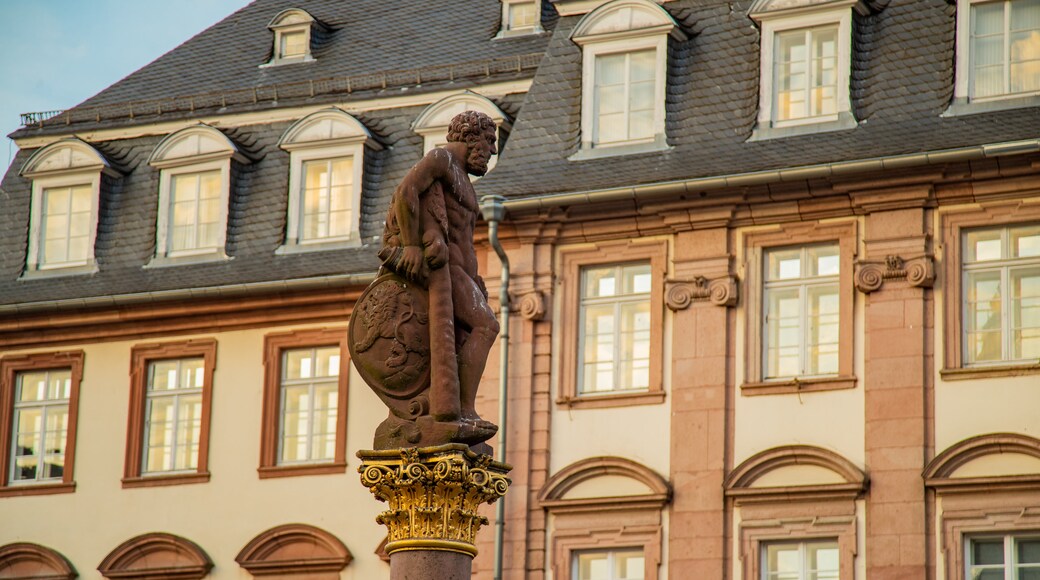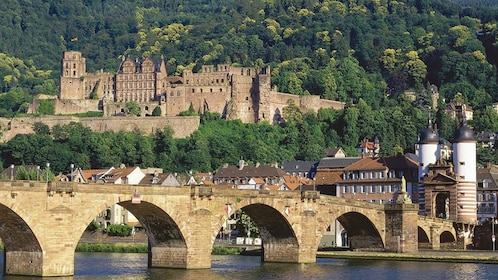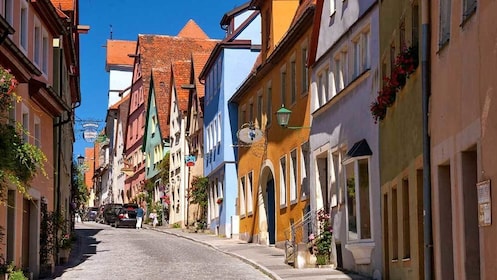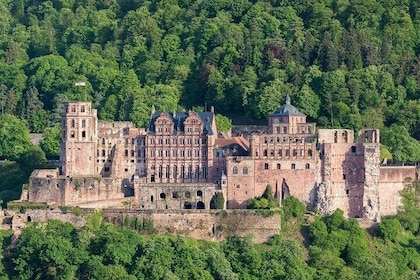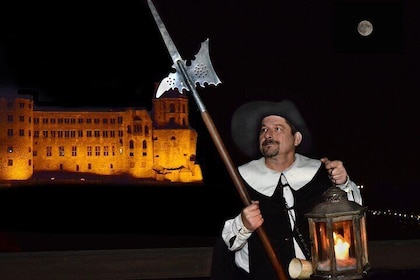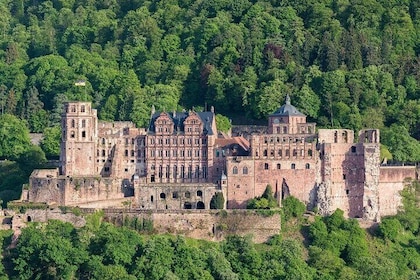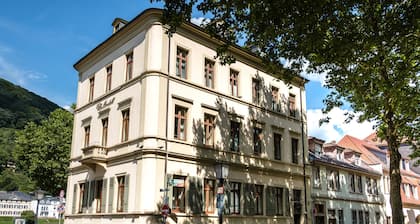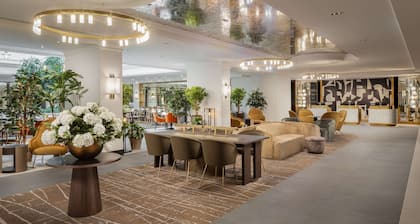The 17th century was a difficult time for Heidelberg, but the Hercules Fountain stands as a symbol of the city’s enduring civic virtue. The War of Palatine Succession rampaged through the area during the last decades of the 1600s, destroying much of the Altstadt and further damaging Heidelberg Castle on its hill. By the end of the hostilities, only 150 people were left with the task of rebuilding the city to serve once more as the court’s residence. Celebrate their success as they intended by looking upon the statue and fountain they erected.
Find the fountain easily, even in the bustle of the Marktplatz on market days, as the small figure at the top of the spire stands head and shoulders above the people milling about below. Imagine the elation the townspeople felt as Heinrich Charrasky, the sculptor, unveiled his work in 1706, almost 20 years after the end of the war. Walk slowly around the edge, noting the elaborate ironwork that demonstrates the craftsmanship of this area.
In the summer, sit on one of the nearby café terraces and look up to see how the figure is silhouetted against the bright blue sky. Groups of friends, students and tour groups often meet at the base, demonstrating the continuing atmosphere of unity that pervades the city. In winter, get a mug of mulled wine in the Christmas market and watch snowfall putting a light coat of white on Hercules’ shoulders as you sip the warm liquid and ponder the history of the city.
Fulfilling its duty as the town’s principal meeting spot, the Hercules Fountain is easy to spot in the Heidelberg Marktplatz, the central square of the city’s Altstadt. Get to the Marktplatz from Heidelberg central train station in 20 minutes by subway or bus or drive here in 10 minutes. Walk from the river cruise port in about 10 minutes or take the bus in 5 minutes. Parking around the Marktplatz is extremely limited. Driving is restricted on many streets of the pedestrian-friendly Altstadt. Access to the square and Hercules Fountain has no restrictions.



